Children from Adivasi Background get their own Language of Literacy
Posted by Sherein Bansal on October 21, 2016Imagine if the language you speak to your friends, think your funniest thoughts in and dream your bravest dreams in, is hardly known in your own country, and might even reach an early death in two decades. To ward off this isolation acutely felt by Kora and Santali, tribal languages spoken in communities across West Bengal and Odisha, Suchana has been working towards their preservation with quiet determination fuelled by their love for literacy and a zeal for preserving adivasi languages.
Suchana, a 10 year old community group, works in Birbhum, W. Bengal towards the education of pre-school to class 10 children from Santal and Kora adivasi communities. Suchana knows that when education knocks at your door, it must come in a language that you understand. Entering a school room can be daunting for a child from an adivasi background as she or he is expected to know a state-language that they or their family have never learnt, or have been denied access to. Our education system is missing out on a huge cultural opportunity here by not being inclusive of more languages, and thus not reaching out to children who need education the most. This tragedy of education not benefitting children who are trying to break centuries-old shackles of being looked down upon as an adivasi is profound.
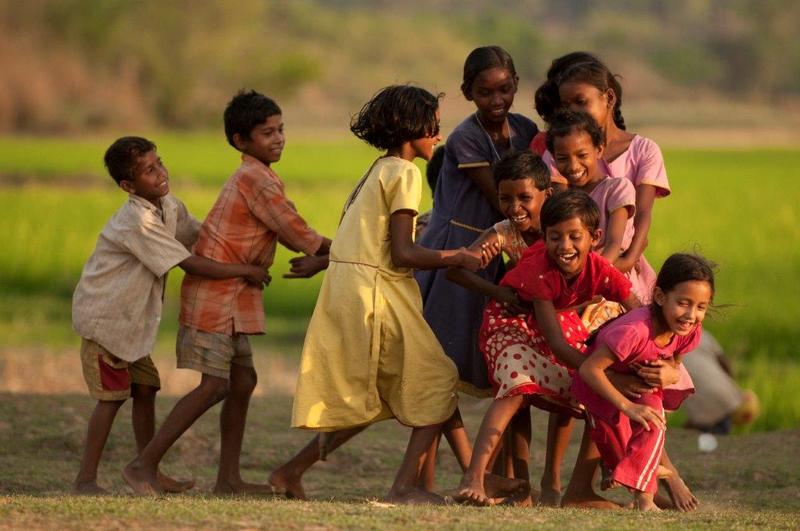
This is where Suchana steps in to ensure ‘Right to Education’. They have made it their mission to make sure that Kora and Santali are looked upon as legitimate, literacy-inducing languages, and that ‘adivasi school going kids’ can just be school going kids. They aim to sustain cultural identities and promote literacy among the tribal and underprivileged communities through their education programs. As far as they know, they are the first organization to have created children’s books, or in fact any books at all, in Kora.
One of their key educational initiatives, Mobile Library, was started in 2011 with children of 6 villages. Today, the library travels in two vehicles, covers 25 villages and has 1135 members. It consists of books that are written in multiple languages, especially in the tribal languages (Kora and Santali) that children can relate to and learn in. Children who have never held story books in their hands or understood their importance now have access to joyful reading material that’s related to their education and growth, along with creativity and imagination.
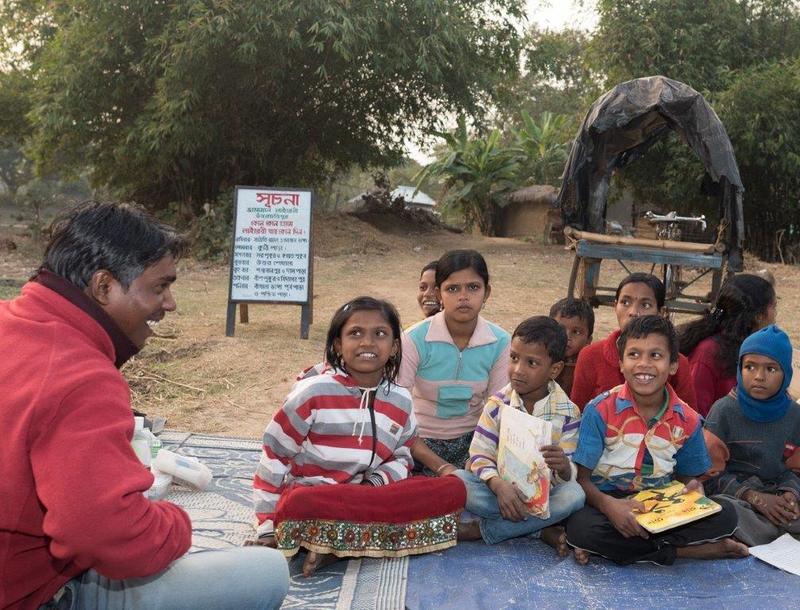
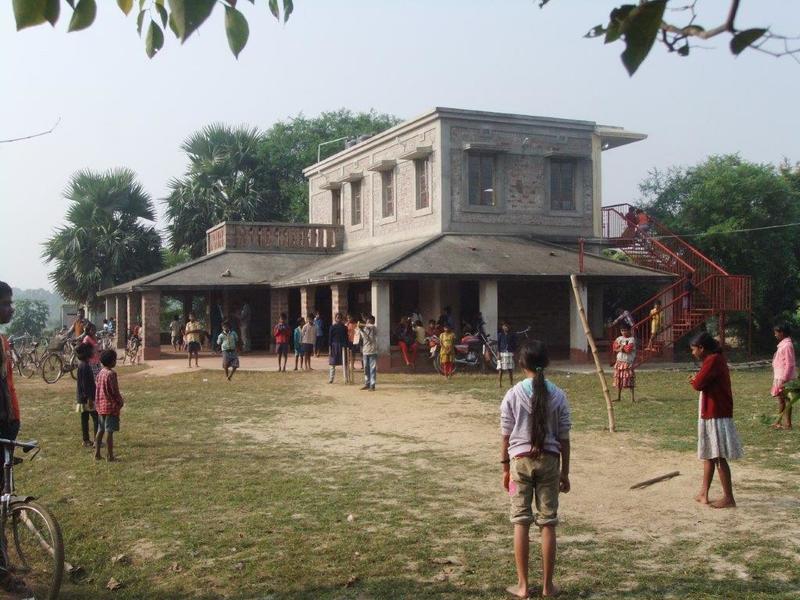
Kirsty Milward, Founder of Suchana, says, “In Santali and Kora – and other adivasi languages – there is no children’s literature at all. This is at least partly because until the current generation, most adivasi children did not go to school. Among the (still quite young) mothers of Suchana’s current adivasi students, for example, 80% never went to school at all. So where was the need for children’s books in those languages?”
We are proud of our association with Suchana. The organisation’s teacher-translators have been able to develop supplementary reading materials in Kora and Santali at a much faster and prominent way through StoryWeaver. Currently, 27 Kora books and 19 Santali, both in Bengali script are on StoryWeaver. Suchana has printed 10,000 copies of these books for their mobile library and are exploring loading e-books onto SD cards to disseminate stories on low cost mobile phones.
It’s a huge step for languages that were near obscurity and oblivion, to be suddenly sailing the digital waves and ready to be accessed by the whole world in the form of beautiful stories. Read these stories in Bengali script in the tribal languages of Kora and Santali.
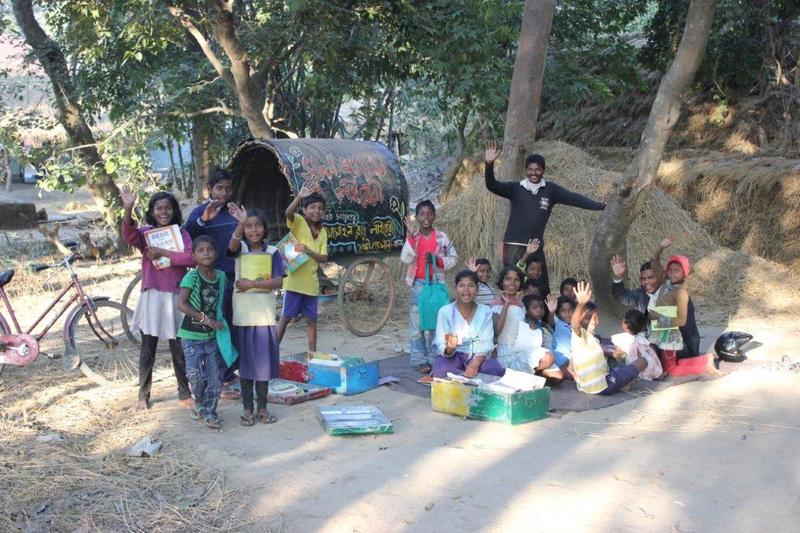
comment (1)
Changing the typographic landscape of a country: one letter at a time
Posted by Remya Padmadas on December 14, 2016by Pooja Saxena
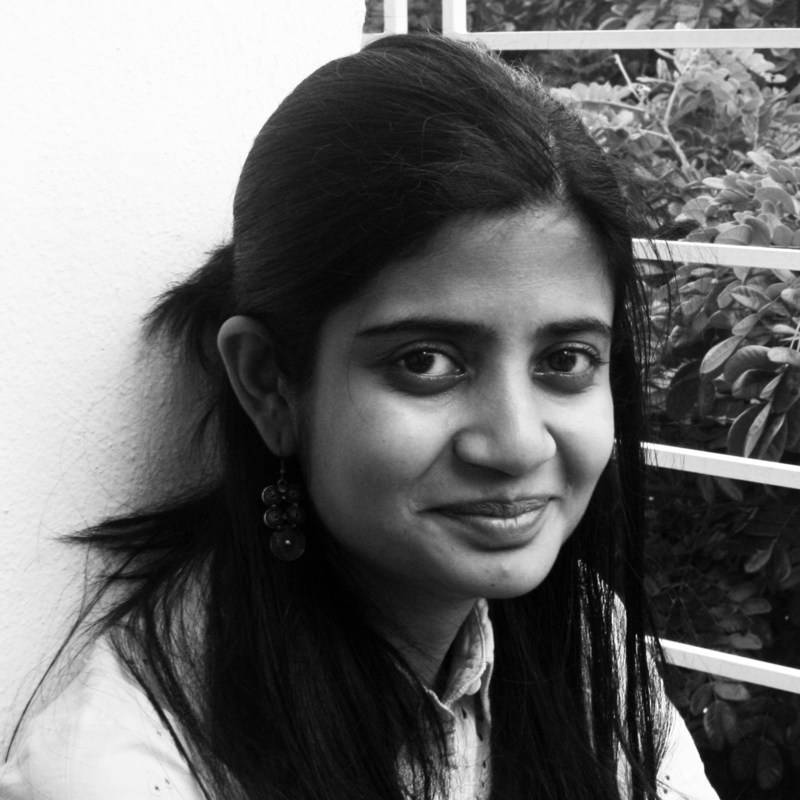
Pooja Saxena makes and works with typefaces, especially those in Indian scripts. See her work here, or follow her on Instagram.
My interest in designing typefaces in Indian scripts grew out of years of disappointment with the way most Hindi books I came across looked. Apart from a few exceptions, they looked like poor cousins of English books. Whether it was a children’s story book or a novel or magazine, there was usually the same drab typeface. Some letters didn’t look like what we were taught in school, on others the matras (vowel marks) didn’t arch at the right places. Overall, the books and the letters inside them had an air of neglect. They looked old and completely unexciting. When I first learned that designing typefaces was a real job, I thought here was the opportunity to change all that.
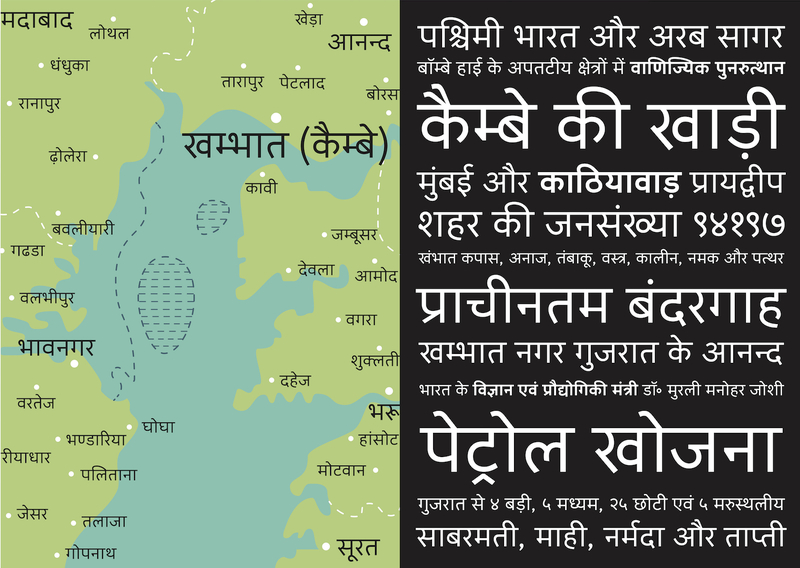
Cambay, Devanagari typeface designed by Pooja Saxena for Google Fonts
Changing the typographic landscape of a country as diverse as India is not a one-woman job, but every now and then a project comes by that has the potential to make a small difference. Two years ago, as a result of a conversation with Subhashish Panigrahi, the Access to Knowledge programme at the Centre for Internet and Society commissioned a Ol Chiki typeface family. The Ol Chiki script, about which I knew precious little at the time, is used to write the language Santali, which is spoken by over six million people in India and its neighbouring countries. At the time that we started working on this project, there was no Unicode compliant typeface available in the script, making it impossible for it to be used on computers and cellphones, and online in a consistent and future-proof way. We hoped to change that by designing a small, but useful typeface family (it comes in regular, bold and italics) along with input methods and keyboard layouts that would allow a person to type Ol Chiki text easily.
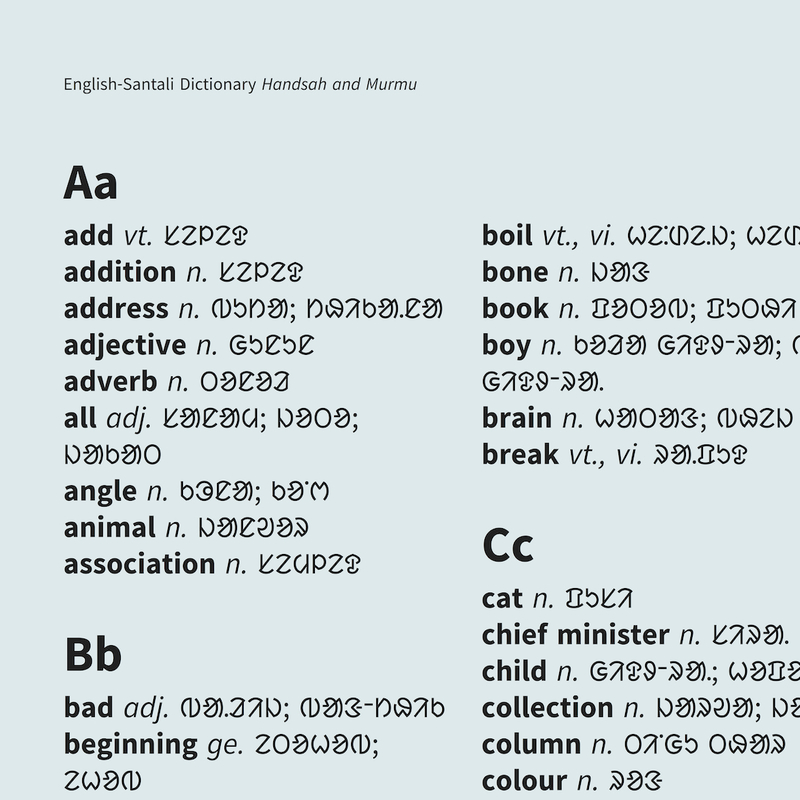
Guru Gomke, Ol Chiki typeface designed by Pooja Saxena with research inputs from Shubhashish Panigrahi,
for the A2K Programme at the Centre for Internet and Society.
This project was especially challenging because not only was Ol Chiki a completely unfamiliar script to me and Subhashish, but there was limited material available for us to consult. While designing a typeface in a script one reads and/or writes, or is at least familiar with, one’s experience with those letters can act as a guide. By writing them and seeing them printed in different fonts, in many people’s handwriting — some good, some bad — and on hand painted signs, one develops an instinct for identifying which parts of a letter make it recognisable. That way we know what parts of the letter can be exaggerated, and what others can be played down without compromising legibility. For an unfamiliar script, this visual vocabulary and the traditionally correct way of writing letters must be learned. Manuscripts, printed documents, handwriting manuals and samples, metal type, linguistic information about the script, feedback from native readers — all form parts of a puzzle that needs to be put together to design a competent typeface.
The story of Ol Chiki script is fascinating. The script is less than a century old, and was devised by Pandit Raghunath Murmu, who wanted to create a script that could accommodate all the features of the Santali language — something that the scripts used to write Santali so far had failed to do. Legend has it that he based the design of the letters on objects commonly found in the everyday environment of the Santals. Even though the script was created between 1920 – 1940, the Santal community has many myths about how it was created. One says that the script came to be at the time when the Earth itself was created, another says that the script was given as a divine gift to a learned man, Pandit Raghunath Murmu. It is after Pandit Raghunath Murmu, who is reverentially called Guru Gomke, that the Ol Chiki typeface that I designed was named. You can find out more about the Ol Chiki typeface and input methods project here.
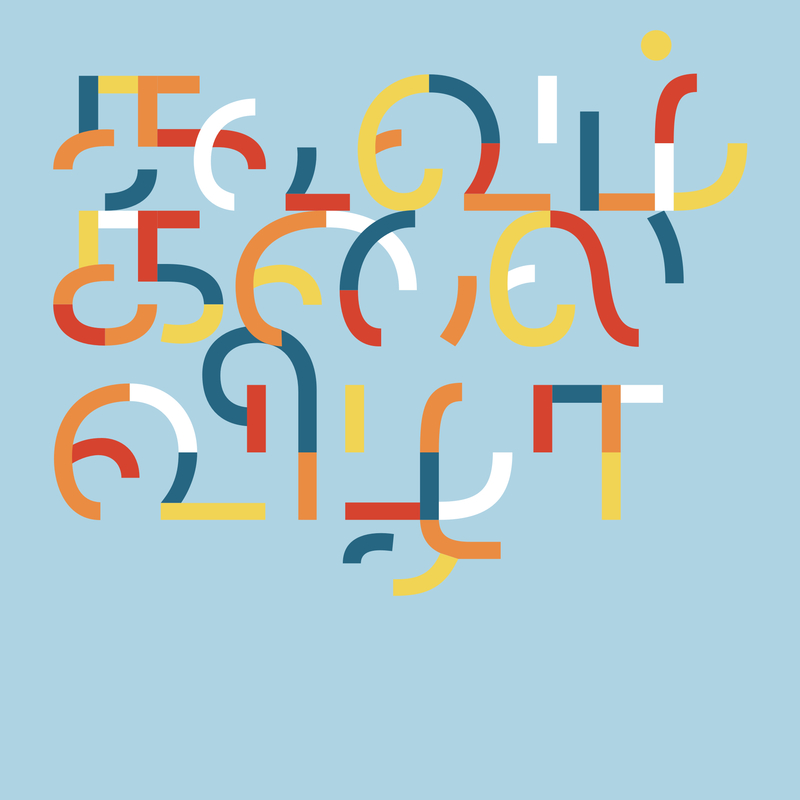
Custom lettering for the Tamil branding of the Coovum Art Festival, designed by Pooja Saxena
If you’re interested in Indian type design and le ering, consider following the work of these exceptional designers — Noopur Datye, one of the co-founders of type design collective, Ek Type, who has designed custom typefaces TV channels like LifeOK; Kimya Gandhi, who is partner at Mota Italic, and recently designed an inventive Devanagari handwriting font; or Lipi Raval, whose flamboyant Gujarati typeface Mogra is a complete head-turner.
Be the first to comment.